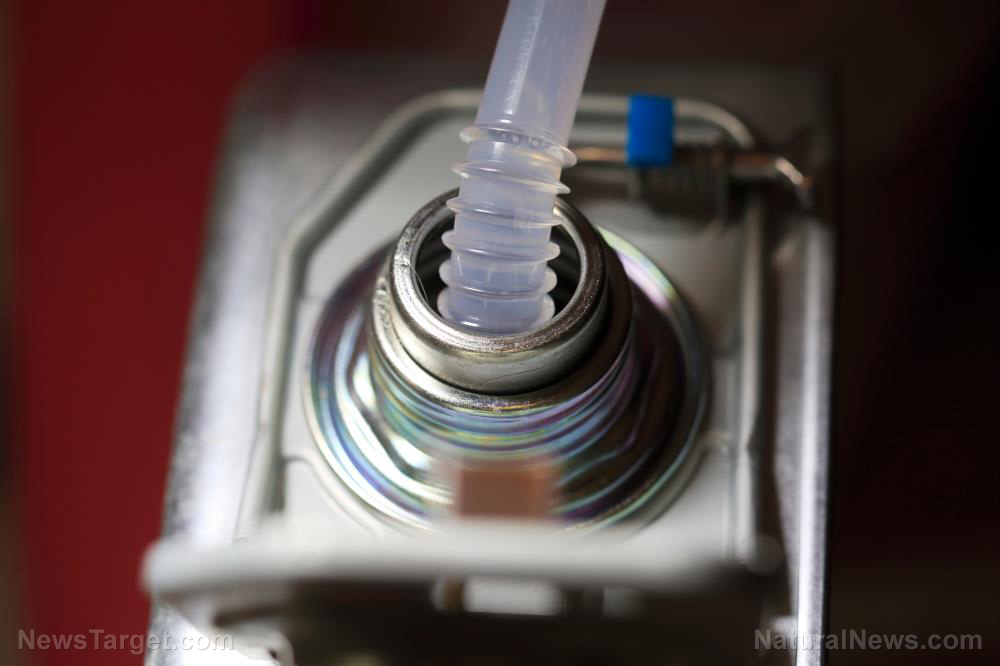Natural sugar alternatives: How to grow Aztec sweet herb, stevia and sugar cane
11/29/2021 / By Virgilio Marin

Sugar isn’t exactly the best food to eat if you’re looking to be healthy. It raises your blood glucose levels and increases your risk of diabetes. Thankfully, natural sugar alternatives are great sweeteners that don’t do much damage to your health. Aztec sweet herb, stevia and sugar cane are some of the best sugar substitutes that you can grow in your home garden. (h/t to RoguePreparedness.com)
How to grow Aztec sweet herb
Aztec sweet herb (Lippa dulcis) is a perennial herb that is said to be 1,500 times sweeter than table sugar. It has tiny, sweet-smelling flowers and roots that taste like licorice. But more than just a natural sweetener, it is also a terrific natural remedy for respiratory ailments. In fact, the Aztecs used this sweet herb to treat coughs, colds and bronchitis.
Aztec Sweet Herb happily grows in either a garden or a pot with a well-draining soil rich in organic matter and a bit of lime. If your area is a little wintry, plant it in a pot so so you can move it indoors, but be sure it gets adequate sunlight as it prefers the full sun. If you live in a hot climate, the plant will need some shade at noon for protection.
How to grow stevia
Stevia (Stevia rebaudiana) is a sweet perennial herb known as one of the healthiest sugar substitutes. It is natural and calorie-free but 200 times sweeter than table sugar. Studies have also linked stevia to reduced calorie intake, lower blood sugar and cholesterol levels and a reduced risk of cavities.
Stevia grows best in temperate to subtropical conditions. But you can also grow stevia in the tropics so long as you plant it in the cooler months. If you live in colder areas, you’ll need to bring the plant inside to protect it from the cold. Big piles of mulch can help keep it alive, as does a mini greenhouse made of bamboo sticks.
The herb thrives in rich, loose, well-draining soil and doesn’t like drying out or wet feet. To keep soil conditions balanced, add mulch underneath. This would help keep the water where it’s needed and increase soil quality. You can use cuttings, seed or rhizome division to grow stevia.
How to grow sugar cane
Sugar cane (Saccharum officinarum) is a perennial grass cultivated for its juice. Sweet and syrupy, sugarcane juice is pressed from peeled sugar cane and processed to make cane sugar, brown sugar, molasses and jaggery. But sugarcane juice is not pure sugar. It comprises up to 75 percent water, up to 15 percent fiber and up to 15 sugar in the form of sucrose. In traditional Eastern medicine, it is commonly used to treat liver and kidney disease, among other conditions.
Sugar cane is propagated mainly by the planting of cuttings. It grows best in an outdoor garden because it produces a number of stalks that reach 10 to 24 feet high. It thrives in tropical and subtropical climates and requires similar care to grass. If you’re planting during the winter, you can grow it in big pots and move it to a warmer position. Be sure it gets adequate sunlight and water it regularly. Take note that sugar cane is fast-growing, so you might need to harvest them twice a year.
Sources include:
Tagged Under: Aztec sweet herb, food independence, green living, Herbs, home gardening, homesteading, natural sugar alternatives, stevia, sugar, sugar cane, sustainable living, tips
RECENT NEWS & ARTICLES
COPYRIGHT © 2017 PREPAREDNESS NEWS





















